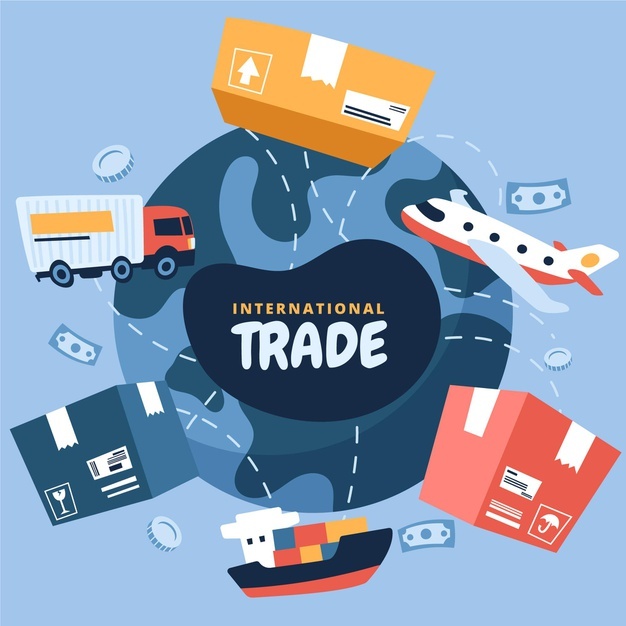Introduction:
In order to become successful in today’s global marketplace, exporters should provide their customers with appealing sales terms supported by suitable payment methods. The ultimate goal is getting paid in full and on-time for each export sale. An applicable payment method must be chosen carefully to reduce the payment risk while also fulfilling the needs of the buyer. There are a variety of ways that payments can be made, including a different level risk for collection. We will try to explain these methods from most secure to least secure for exporters. There are five major payment methods you will often see parties adopting in international trade. These are cash in advance, letter of credit, documentary collections, open account, and consignment. We will discuss each of these below.
- Cash in advance
Cash Payment is a form of payment that the importer pays for the cost of the goods in a foreign trade transaction before the goods are shipped to the exporter. It is usually seen that this method is preferred for goods that are in the seller’s monopoly or have a high level of demand in the market.
Cash export fees may be collected through banks or by check and effective to the buyers themselves or to the declared third parties, or by credit card if the foreign currency seller is resident abroad or if the credit card is obtained from abroad. The seller who receives the payment then sends the goods. Documents are sent between the parties; documents are not given to banks.
There is no internationally valid rule governing cash payment. The cash payment method is the most advantageous and risk-free foreign trade payment method for exporters. Although it may be attractive for importers due to discount opportunities, it is the riskiest payment method due to possible situations such as the fact that the goods do not meet the order or are not sent on time.
- Letter of credit
A letter of credit (L/C), or “credit letter” is one of the most secure payment methods available to international traders. It is a letter from a bank guaranteeing that a buyer’s payment to a seller will be received on time and for the correct amount and it is one of the most secure payment methods available to international traders. The importer sets up credit and pays his or her bank for this service. A Letter of Credit is useful when well-founded credit information about a foreign importer does not exist or is difficult to secure, but the exporter is satisfied with the creditworthiness of the importer’s foreign bank. A Letter of Credit also protects the buyer as they do not need to make a payment until the goods have been shipped as promised.
- Documentary collection
A documentary collection (D/C) is a transaction whereby the exporter entrusts the collection of the payment for a sale to its bank (remitting bank), which sends the documents that its buyer needs to the importer’s bank (collecting bank), with instructions to release the documents to the buyer for payment. Funds are received from the importer and remitted to the exporter through the banks involved in the collection in exchange for those documents. D/Cs involve using a draft that requires the importer to pay the face amount either at sight (document against payment) or on a specified date (document against acceptance). The collection letter gives instructions that specify the documents required for the transfer of title to the goods. Although banks do act as facilitators for their clients, D/Cs offer no verification process and limited recourse in the event of non-payment. D/Cs are generally less expensive than LCs.
- Open account
An open account transaction is a sale where the goods are shipped and delivered before payment is due, which in international sales is typically in 30, 60 or 90 days. Obviously, this is one of the most advantageous options to the importer in terms of cash flow and cost, but it is consequently one of the highest risk options for an exporter. Because of intense competition in export markets, foreign buyers often press exporters for open account terms since the extension of credit by the seller to the buyer is more common abroad. Therefore, exporters who are reluctant to extend credit may lose a sale to their competitors. Exporters can offer competitive open account terms while substantially mitigating the risk of non-payment by using one or more of the appropriate trade finance techniques covered later in this Guide. When offering open account terms, the exporter can seek extra protection using export credit insurance.
- Consignment
Consignment in international trade is a variation of open account in which payment is sent to the exporter only after the goods have been sold by the foreign distributor to the end customer. An international consignment transaction is based on a contractual arrangement in which the foreign distributor receives, manages, and sells the goods for the exporter who retains title to the goods until they are sold. Clearly, exporting on consignment is very risky as the exporter is not guaranteed any payment and its goods are in a foreign country in the hands of an independent distributor or agent. Consignment helps exporters become more competitive on the basis of better availability and faster delivery of goods. Selling on consignment can also help exporters reduce the direct costs of storing and managing inventory. The key to success in exporting on consignment is to partner with a reputable and trustworthy foreign distributor or a third-party logistics provider. Appropriate insurance should be in place to cover consigned goods in transit or in possession of a foreign distributor as well as to mitigate the risk of non-payment.

